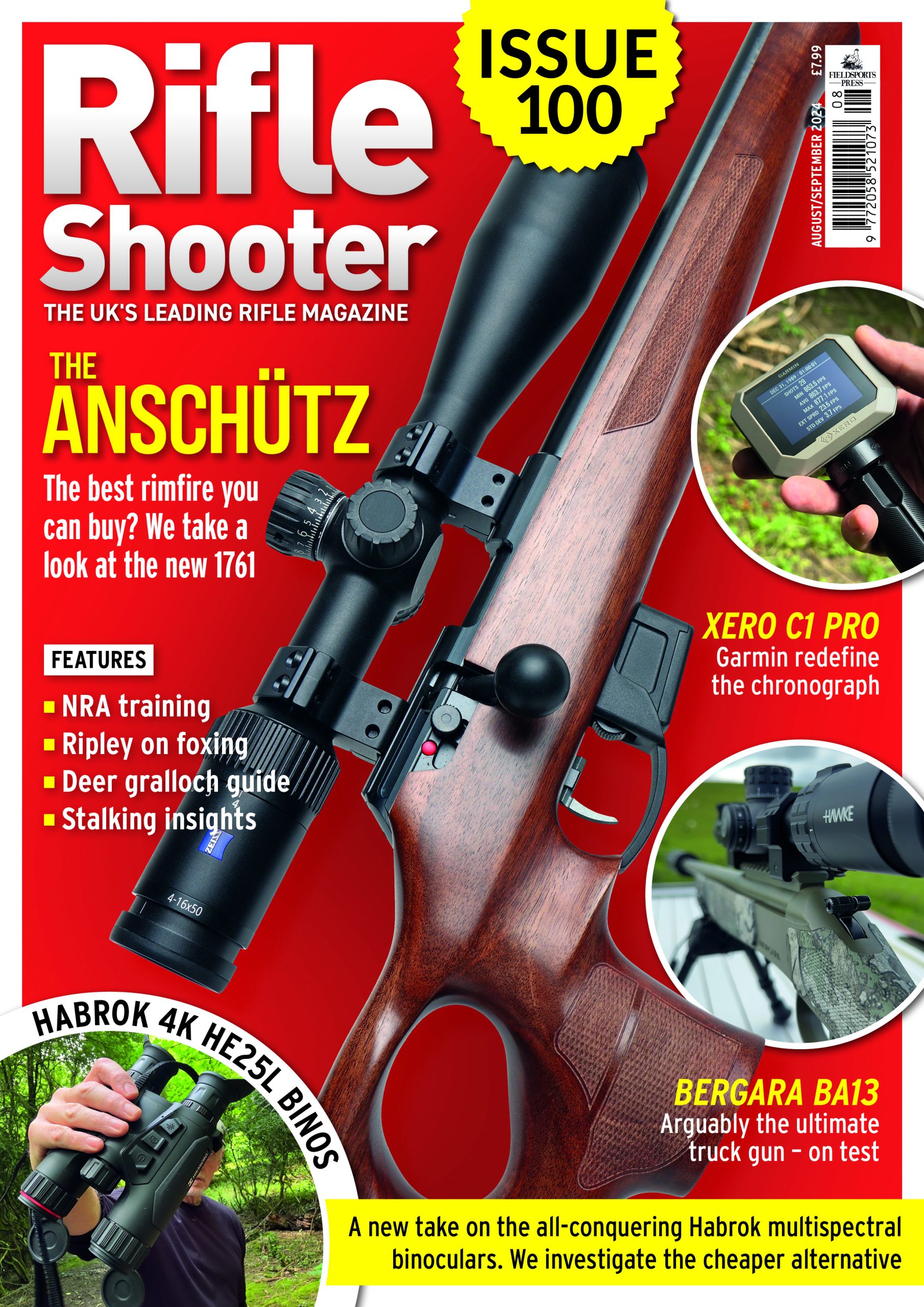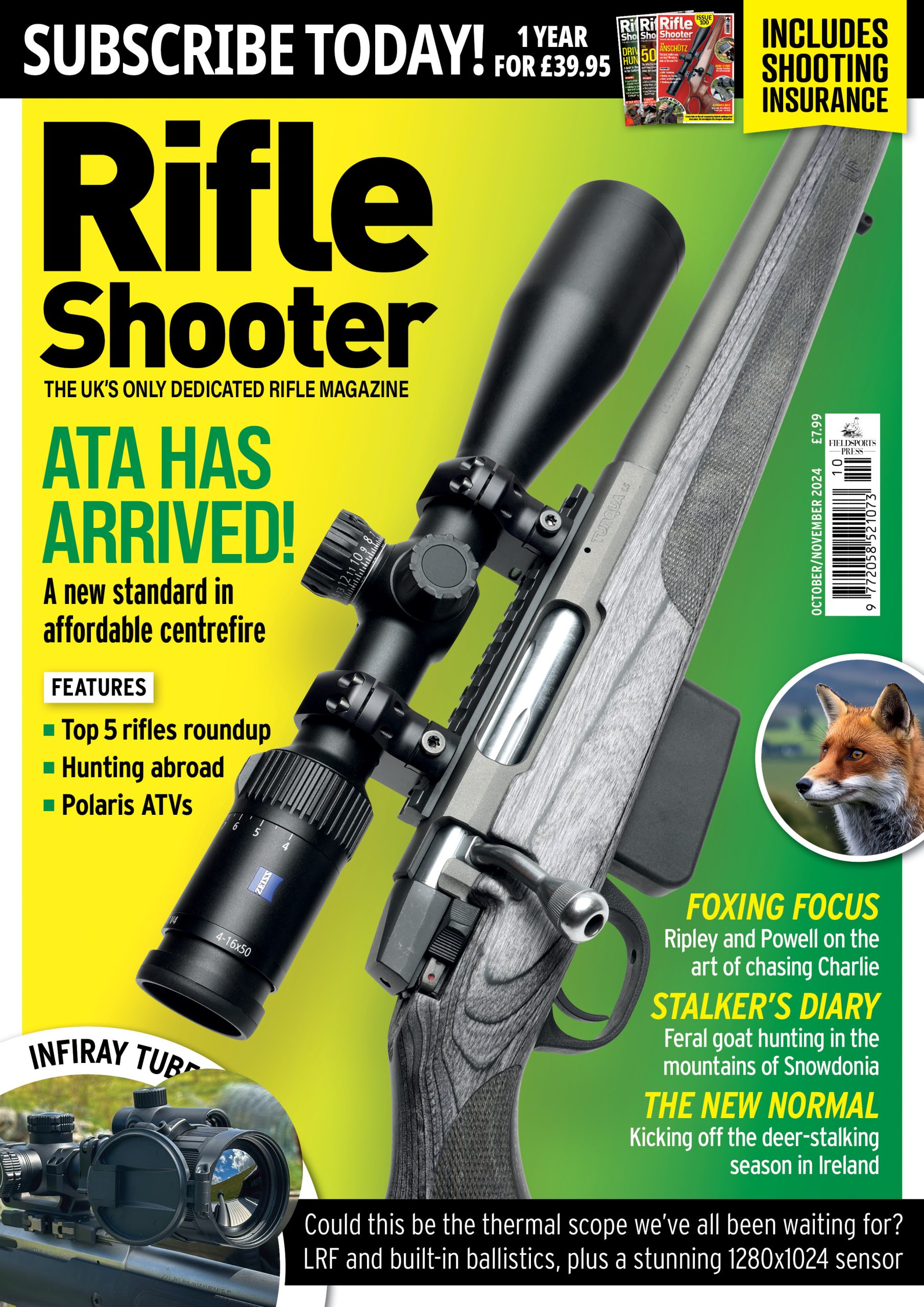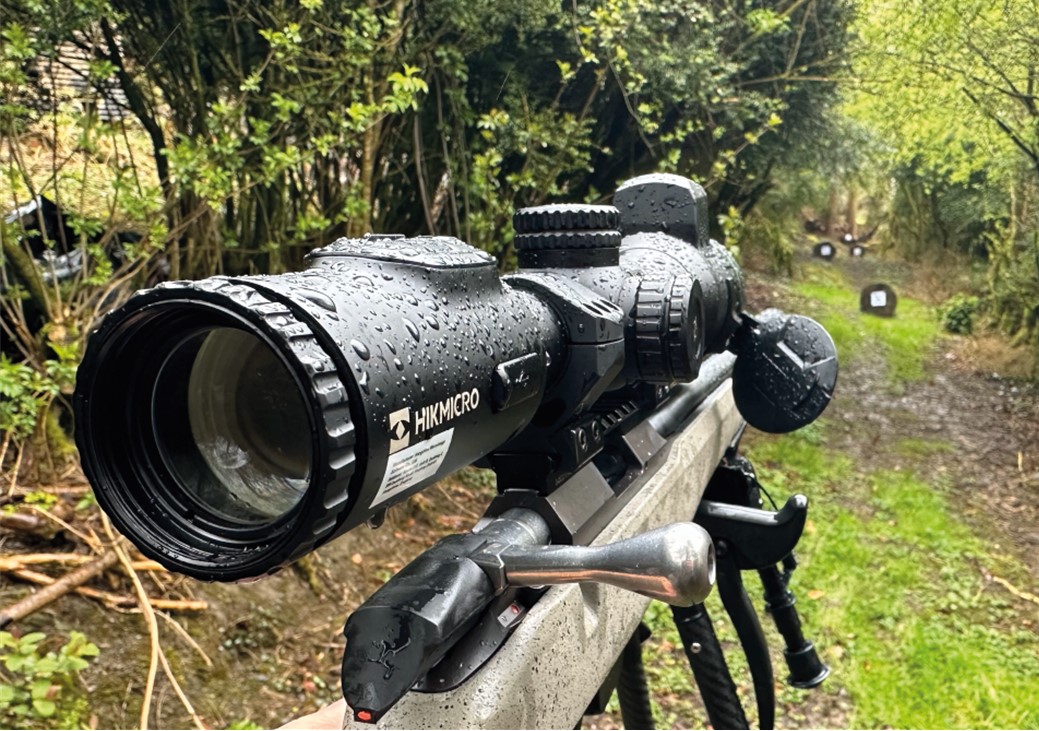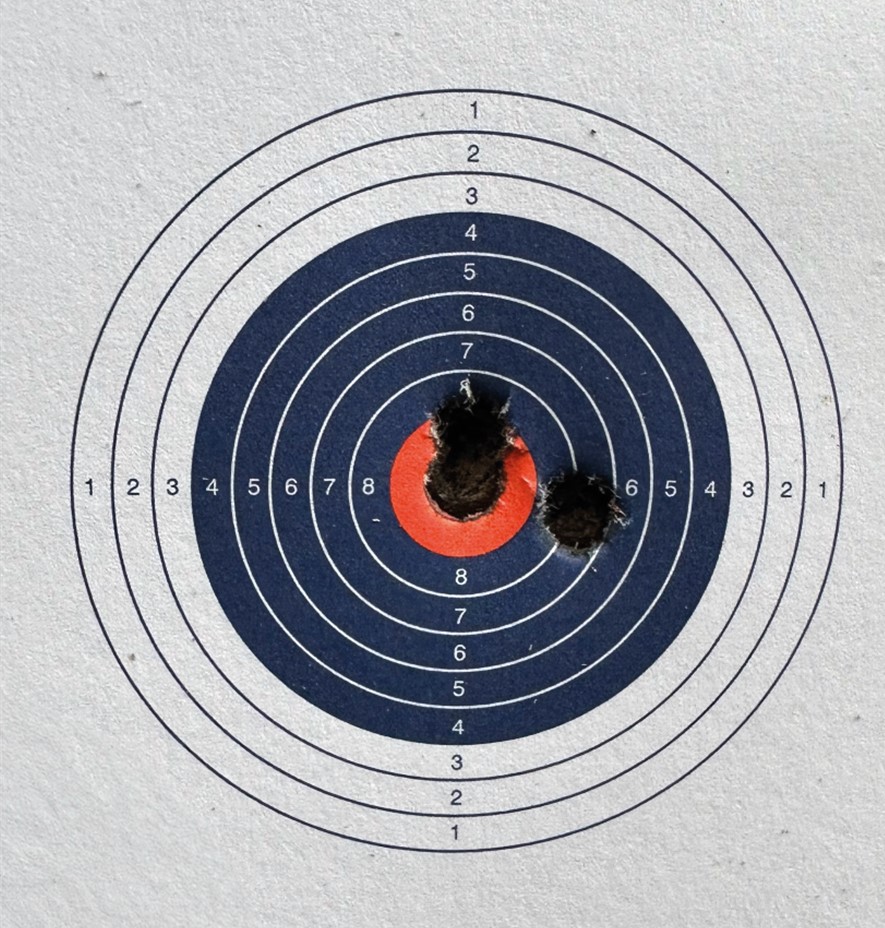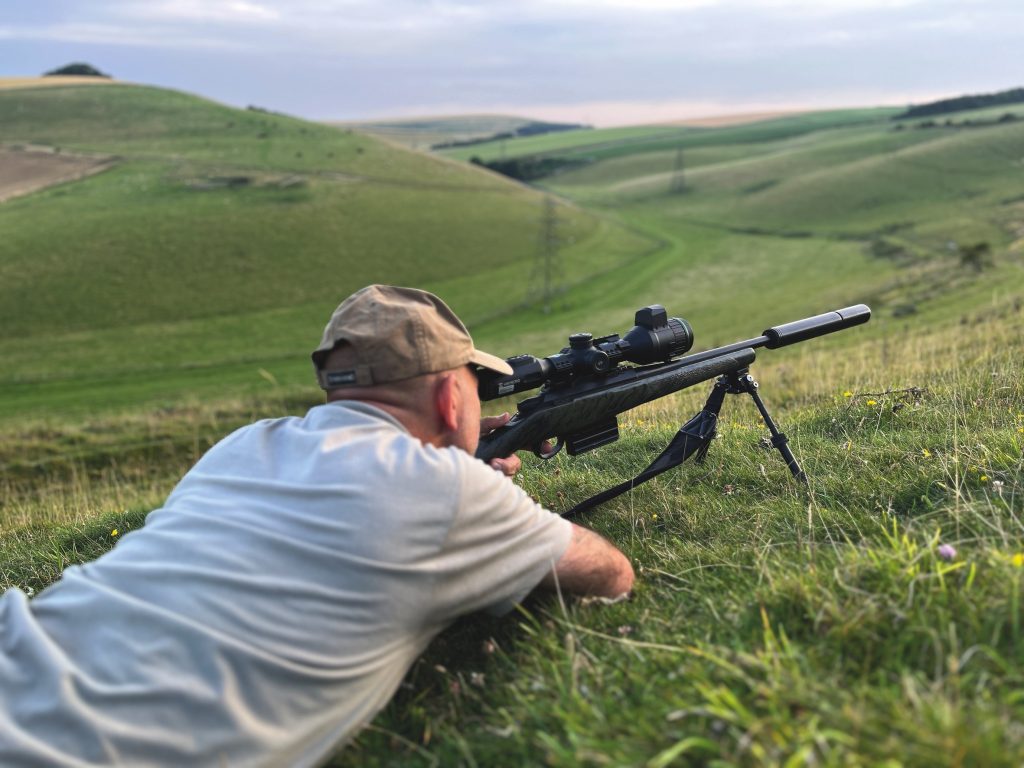HIKMICRO ALPEX LRF 4K RIFLESCOPE
As Paul Austin explores the latest in day/night optics with LRF and ballistics, he is blown away by its quality, functionality and performance at a very reasonable price.

I’ll be honest. When I first heard about the HikMicro Alpex LRF 4K, or more precisely its price, I was a bit sceptical. A day/night IR scope with LRF and a built-in ballistic calculator for just £850? It all sounded a bit too good to be true. Don’t get me wrong, no one can fail to be impressed by HikMicro’s assault on the IR and thermal market in the past couple of years, with what feels like a new product launching every month. In that short time they have not only caught up, but some would say surpassed, their rivals in certain areas, the new Habrok multispectral binoculars being a prime example.
As yet Pulsar haven’t produced an LRF day/night scope with ballistics. This means that the only real competitor to the Alpex is ATN with the X-Sight series, or perhaps something from the Pard range, which are even cheaper but more geared towards air rifles than heavier recoiling centrefires.
The X-Sight 5 LRF, as is often the case with ATN day/night IR scopes, it’s in need of a little fine-tuning when it comes to the firmware, but all the basics are there. Smaller and lighter than its predecessor, even with the new in-built LRF. It has potential, but struggles with ‘bang-for-your-buck’ in relation to the Alpex. The latest incarnation of the X-Sight retails at£1200, some £350 more expensive than the Alpex, making the latter appear almost worrying affordable.
It is important to remember that the Alpex does not ship with an IR torch, so you will need to factor that into the overall spend if you don’t already own one. For a new shooter this will bring the two closer together, as the X-Sight ships with an 850nm torch and mount as standard.
DESIGN AND ERGONOMICS
My first impressions were that the Alpex looks very good and comes nicely packaged with a quality carrying case. The scope itself is well styled and has fairly typical scope dimensions, with the only nonstandard’ element being the LRF emitter/receiver atop the ocular end, requiring the torch to be offset slightly with most mounts.
The dioptre has plenty of adjustment and there’s a charging port on the side for the internal battery. Up top are the key controls, with the LRF trigger on the right, which doubles as the PIP activation button with a long press. A button on the left activates pic/video recording, with a long press triggering the latter. There’s also a recoil-activated video function that works really well. The power/ standby button finishes off the trio of key functions, which includes a handy, and more importantly subtle, LED indicating whether the scope is ‘on’ or in ‘standby’ mode.
What at first glance appears to be typical windage and parallax turrets are in fact the home of the replaceable 18650 battery. I’ve been testing the scope extensively and had no issues with the combination of internal and replaceable power, easily coping with extended trips with no swaps required. Just be a little careful not to strip the thread on the battery compartment; it’s an alloy affair and slightly prone to damage if handled roughly.
Up top is where the action is, with what looks like an elevation turret handling menu access, with a longer press triggering the menu system. Dialling the turret moves between functions, with a short press to select and a longer hold to step back up the menu. As for functionality it’s all there, with multiple profiles for rifle swaps, multiple bullet profiles within those, brightness and contrast adjustment, and optional cant and angles on screen. There’s also a nice selection of reticles and colour schemes, and an excellent ‘one-shot-zero’ freeze function, which importantly works well at any mag level.
The Alpex is able to display really high-quality on-screen previews of stills and video at 1920×1080 with or without audio. The LRF works well, reaching just shy of the 1000m claimed (with multiple pings) but was very reliable around 850m and below. In short the Alpex has everything you could need to easily configure the scope, with simple firmware updates, sharing, previews and livestream options via the HikMicro Sight app.
IN THE FIELD
In terms of image quality, I’d put the Alpex on a par with the best. I’ve been a long-time user and fan of the Pulsar C50 and it easily matches that in terms of image quality both day and night. Low-light daytime sensitivity is also excellent. I partnered the Alpex with a PBiR X during testing and it performed admirably, with a focused beam and associated mag setting making extreme long-range night-time shooting (300m plus) a distinct possibility.
Mark Ripley shot a fox at 315m without any difficulty, but did say (as an occasional long-range foxer) that he would prefer a higher base mag of 5-5.5x. I prefer the existing 3.5x and I think it’s the right choice for Hik for covering all the bases between air rifle and centrefire applications.
When the unit first arrived the Alpex went straight on my Blaser R8 in .22-250. As you can see from the chrony image, this is a very flat-shooting rifle and pretty much point-and-click from 50-200m. After taking care of numerous foxes during lambing I realised this was probably not a gun best suited to test the scope’s ballistic calculator, so I swapped it over to a Tikka T3x UPR with some tried (and batch tested) .22 LR Eley Tenex ammo.
Testing began on my 50m rimfire range. The initial zero was set alongside the ballistic info, scope height, BC and bullet speed, along with some basic environmental settings. I was then ready to go. Oddly the built-in ballistic calculator doesn’t include bullet weight, relying on the above settings to calculate the drop, but it worked well enough. However, remember the old IT adage – rubbish in, rubbish out! It’s vital that you provide the correct information as without accurate data no ballistic calculator can do its job.
If you do find that you need to ‘true’ the scope, small adjustments to the bullet speed entry should be enough to fine-tune any POI issues. I didn’t need to, but it’s an option if you’re noticing slight discrepancies at various ranges.
I conducted my final test shoot at 50m and was bang on. Firing up the calculator, I ranged the closest target at just 15m. After ranging, a small cross appears on the centreline of the ret, assuming you’re using a posted reticle, but you don’t have to. The aimpoint cross will still work on any ret. I put that on the bullseye at 15m and fired. Dead centre.
The ballistics work, and work well. I spent the next two to three hours tinkering and trying various distances and I can confirm that the calculator does its job.
A SLIGHT PROBLEM WITH PIP
I’ve read a few complaints about the placement of the LRF ranging box. It’s at about 2 o’clock, roughly a third of the way across the right-hand side of the screen on my rig. This can vary depending on your scope height and mounts. I think an offset position is fine; you definitely don’t want the ranging beam directly over the crosshairs at night, completely obscuring the target. You can set the burst length from 15 seconds upwards and cancel it at any point to lock in the range.
The problem was that I could only see the ranging reticle at base mag. When I moved to anything over 3.5x the ranging reticle vanished. The scope continues ranging but you have no point of reference to know what object you are ranging during the day. I have seen the ranging ret still visible at 7x on another rig; it all depends on the initial offset distance at your base mag.
In night/IR mode it isn’t a problem as you can clearly see the beam and adjust accordingly. However, if you use the PIP function there is a slight problem. The main screen stays at
3.5x (showing the ranging ret), but the aim point generated by the ballistic calculator doesn’t appear within the PIP window, which makes using the PIP function with ballistic calculation fairly pointless. There’s a simple solution. Just don’t use the PIP function alongside the ballistic calculator. In normal zoom modes the aim point updates as you apply or decrease zoom, so there’s no problem. The PIP issue is perhaps a small thing but still mildly annoying. Admittedly the size of the PIP window would eventually crop out the aimpoint anyway as you apply more mag, so perhaps that’s why it hasn’t been mirrored into the PIP window.
THE BOTTOM LINE
Aside from the slightly annoying lack of communication between the ballistic calculator and the PIP window, I really can’t find any fault with this scope. The build is good, the functionality is first class, and the image quality is excellent in all modes. A word of warning though – make sure you update the firmware. The basic factory firmware has a few bugs that the update will fix.
The LRF and ballistic calculator will be the big USPs for most people, but even without them it’s still a very impressive day/night optic. Add them into the mix and you have what in my opinion is the best performing (and best value) digiscope on the market by quite a margin. Very highly recommended!
TECH SPECS
3840×2160 CMOS detector
50mm lens with f1.2 to f2.5 adjustable aperture
1920×1080 resolution 0.49″ sub round OLED display
Built in 1000m laser rangefinder
Day and night modes in stunning 4K
Recoil activated audio, built in 64GB EMMC
Up to 11 hours of continuous operation
Internal rechargeable battery and spare battery in turret (18650)
Related Articles
Get the latest news delivered direct to your door
Subscribe to Rifle Shooter
Elevate your shooting experience with a subscription to Rifle Shooter magazine, the UK’s premier publication for dedicated rifle enthusiasts.
Whether you’re a seasoned shot or new to the sport, Rifle Shooter delivers expert insights, in-depth gear reviews and invaluable techniques to enhance your skills. Each bi-monthly issue brings you the latest in deer stalking, foxing, long-range shooting, and international hunting adventures, all crafted by leading experts from Britain and around the world.
By subscribing, you’ll not only save on the retail price but also gain exclusive access to £2 million Public Liability Insurance, covering recreational and professional use of shotguns, rifles, and airguns.
Don’t miss out on the opportunity to join a community of passionate shooters and stay at the forefront of rifle technology and technique.
